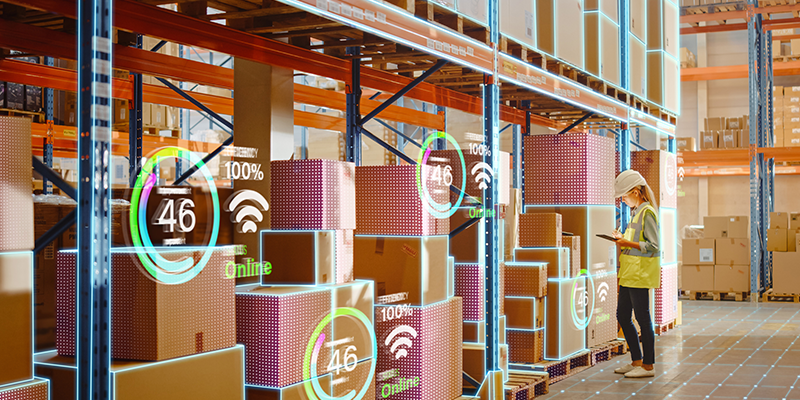Top Software Application Testing Trends for 2024

As the complexity of software applications continues to grow, so does the need for robust and innovative testing strategies. In 2024, businesses must adapt to rapidly changing technology landscapes to ensure their software remains reliable, secure, and user-friendly. From AI-driven testing to cloud-native applications, the world of software testing is transforming. Here are the top trends that will shape software application testing in 2024 and beyond.
1. AI and Machine Learning-Driven Testing in 2024
Artificial Intelligence (AI) and Machine Learning (ML) are revolutionizing testing by automating test case creation, execution, and bug detection. AI and ML algorithms can analyze historical test data, predict potential issues, and prioritize tests based on risk. In 2024, AI-driven testing will focus on predictive analytics and autonomous testing, where the system identifies issues before they arise.
Why It Matters: AI reduces manual efforts, speeds up testing, and improves accuracy by eliminating human error, making testing more efficient for both developers and QA teams.
2. Codeless Testing Tools
2024 will see codeless automation tools continue to grow in popularity. These platforms allow testers with little to no coding knowledge to automate tests using intuitive visual interfaces. Codeless tools shorten the testing cycle and make testing accessible to non-technical team members, enabling cross-functional collaboration.
Why It Matters: Faster, easier test creation leads to shorter development cycles and more thorough testing, allowing teams to release products quickly without compromising quality.
Why It Matters: AI reduces manual efforts, speeds up testing, and improves accuracy by eliminating human error, making testing more efficient for both developers and QA teams.
3. Hyper Automation & RPA in Testing
Hyper automation involves integrating Robotic Process Automation (RPA) with AI and ML to automate repetitive tasks in testing workflows. By leveraging RPA, testing teams can reduce manual work associated with regression testing, system monitoring, and error logging, thereby improving speed and reducing errors.
Why It Matters: Hyper automation enhances efficiency and productivity, allowing QA teams to focus on complex, value-added tasks while automated bots handle routine testing tasks.
4. Continuous Testing in DevOps
With businesses increasingly embracing DevOps methodologies, continuous testing has become a vital part of software development. Continuous testing integrates automated tests throughout the development pipeline, ensuring code is tested early and often. This trend helps developers identify bugs earlier in the lifecycle, minimizing errors during deployment.
Why It Matters: Continuous testing supports faster releases and higher software quality, especially in agile development environments where speed is key.
Why It Matters: Hyper automation enhances efficiency and productivity, allowing QA teams to focus on complex, value-added tasks while automated bots handle routine testing tasks.
5. IoT Testing Expansion
The rise of the Internet of Things (IoT) presents unique testing challenges due to the sheer number of connected devices. IoT testing in 2024 will focus on interoperability, security, and performance, ensuring devices work seamlessly together in different environments. As the number of connected devices in industries like healthcare, manufacturing, and retail continues to grow, IoT testing will become more specialized.
Why It Matters: As more devices connect to networks, thorough testing ensures security, reliability, and performance, particularly in sectors where failures can have serious consequences.
6. Blockchain Testing
As blockchain technology gains adoption in industries such as finance, eCommerce, and logistics, the need for blockchain-specific testing is becoming critical. Testing blockchain applications involves verifying smart contracts, transaction integrity, data security, and scalability. In 2024, testing will focus on ensuring that blockchain applications are both scalable and secure, providing a reliable foundation for decentralized applications.
Why It Matters: Blockchain testing ensures trust and security, particularly in industries dealing with sensitive financial transactions or data privacy.
7. Cybersecurity and Risk-Based Testing
In 2024, cybersecurity will be a top priority as companies face increasing risks from cyberattacks. Risk-based testing will focus on identifying and testing high-risk areas within applications, particularly those dealing with sensitive data. Companies will invest more in penetration testing, vulnerability assessments, and security testing to ensure robust defense mechanisms are in place.
Why It Matters: As data breaches and cyberattacks grow in complexity, robust security testing ensures that vulnerabilities are addressed before they can be exploited.
8. Cloud-Native Testing
The shift to cloud-native applications continues to reshape software development. Cloud-native testing involves testing applications built and deployed on cloud platforms, ensuring they are scalable, secure, and optimized for cloud environments. Cloud-native testing will focus on performance, reliability, and seamless integration with cloud infrastructure.
Why It Matters: As businesses migrate to the cloud, cloud-native testing ensures applications take full advantage of cloud platforms’ flexibility, scalability, and cost-efficiency.
9. Performance Engineering Over Testing
Rather than focusing solely on testing after development, performance engineering involves optimizing system performance during the entire development lifecycle. This proactive approach ensures performance issues are identified and mitigated early, leading to more reliable applications and fewer post-deployment fixes.
Why It Matters: Early optimization of performance reduces costly bottlenecks and improves the overall user experience, especially for applications with high traffic or data processing requirements.
10. Shift-Left and Shift-Right Testing
In 2024, businesses will increasingly adopt shift-left and shift-right testing strategies to ensure continuous collaboration between development, testing, and operations teams. Shift-left testing involves integrating QA earlier in the development process, while shift-right testing extends testing to post-production environments.
Why It Matters: Shift-left improves early bug detection, while shift-right ensures continuous monitoring and optimization after deployment, enhancing the customer experience and system reliability.
11. Green Testing Practices
As companies grow more conscious of their environmental impact, green testing has emerged as a new trend. This practice involves optimizing testing processes to reduce energy consumption and the carbon footprint of testing infrastructure. Green testing encourages the adoption of energy-efficient tools and practices to minimize the environmental impact of software development.
Why It Matters: Adopting sustainable testing practices not only reduces costs but also aligns with corporate social responsibility goals.
Here’s a table of Top Advanced Software Application Testing Tools along with their key features:
Tool |
Key Features |
|---|---|
Selenium |
Open-source, supports multiple browsers, customizable scripts, and integrates with CI/CD pipelines. |
TestComplete |
GUI testing for desktop, web, and mobile apps; script and scriptless options, integrates with CI/CD. |
Katalon Studio |
Codeless testing, built-in reports, supports web, API, mobile, and desktop testing. |
Ranorex |
Cross-browser testing, reusable test scripts, integration with tools like Jira, and Jenkins.. |
Appium |
Open-source mobile app testing, supports Android and iOS, and automates native and hybrid apps. |
LoadRunner |
Performance testing simulates thousands of users and identifies bottlenecks in web applications. |
Apache JMeter |
Open-source load testing, supports multiple protocols, great for performance and stress testing. |
QTest |
Test management, integrates with Jira, provides real-time insights, and supports Agile workflows. |
Tricentis Tosca |
Model-based test automation, supports codeless testing, and integrates with CI/CD. |
Eggplant |
AI-driven testing, supports end-to-end testing, and cross-platform automation. |
Conclusion: Embrace the Future of Software Testing
The landscape of software application testing is rapidly evolving, and staying ahead of these trends will help businesses deliver high-quality software faster and more efficiently. Whether it’s leveraging AI, adopting hyper automation, or enhancing cybersecurity, these trends will play a pivotal role in shaping the future of software testing.
Ready to future-proof your testing strategies? Contact us today to explore how our advanced testing solutions can help you stay ahead of the curve, improve software quality, and accelerate your development cycles.

Head of Quality Engineering




